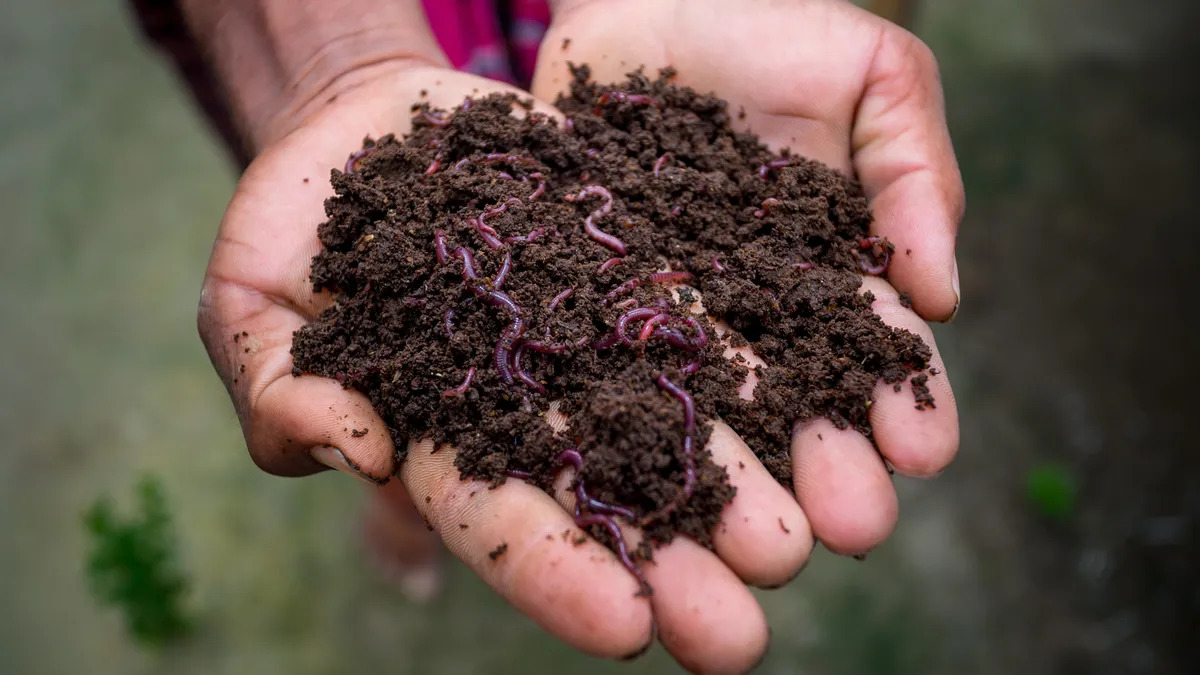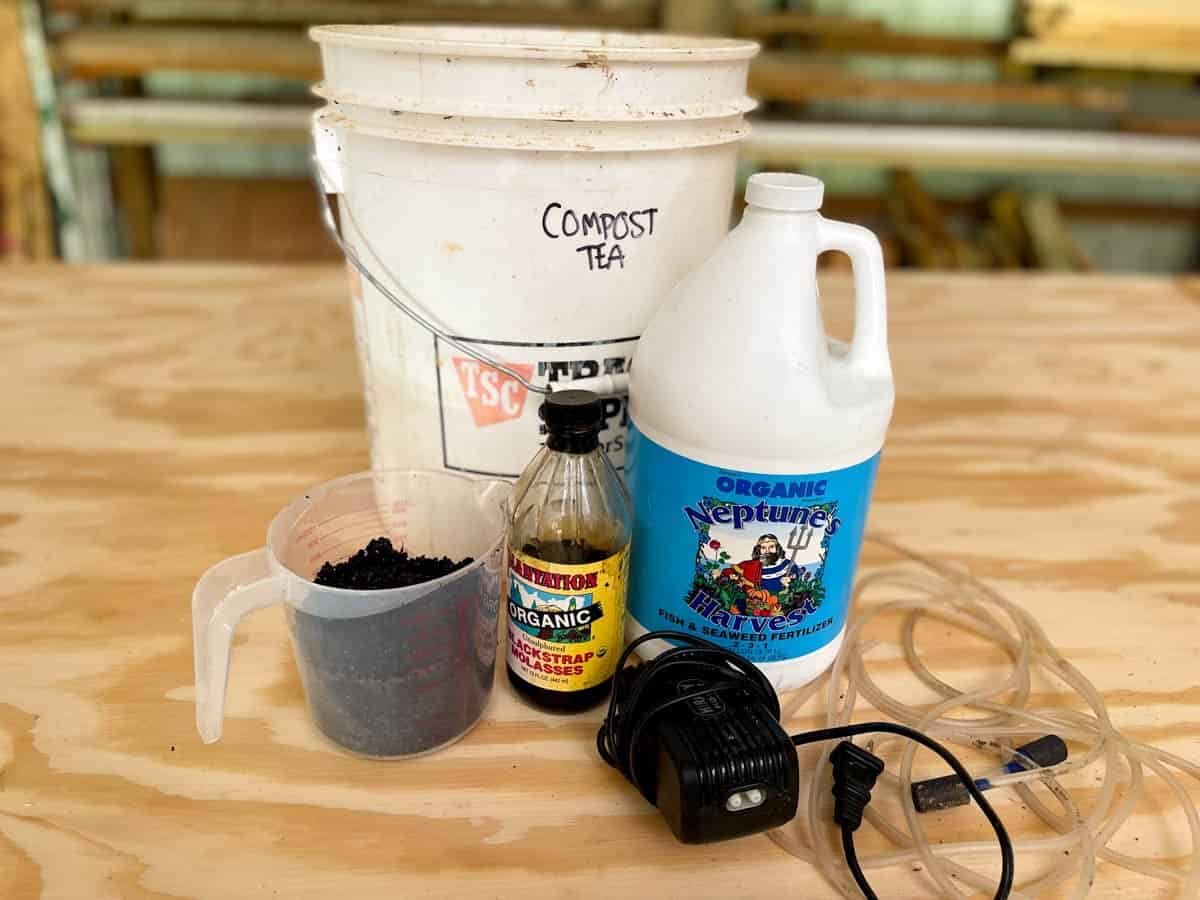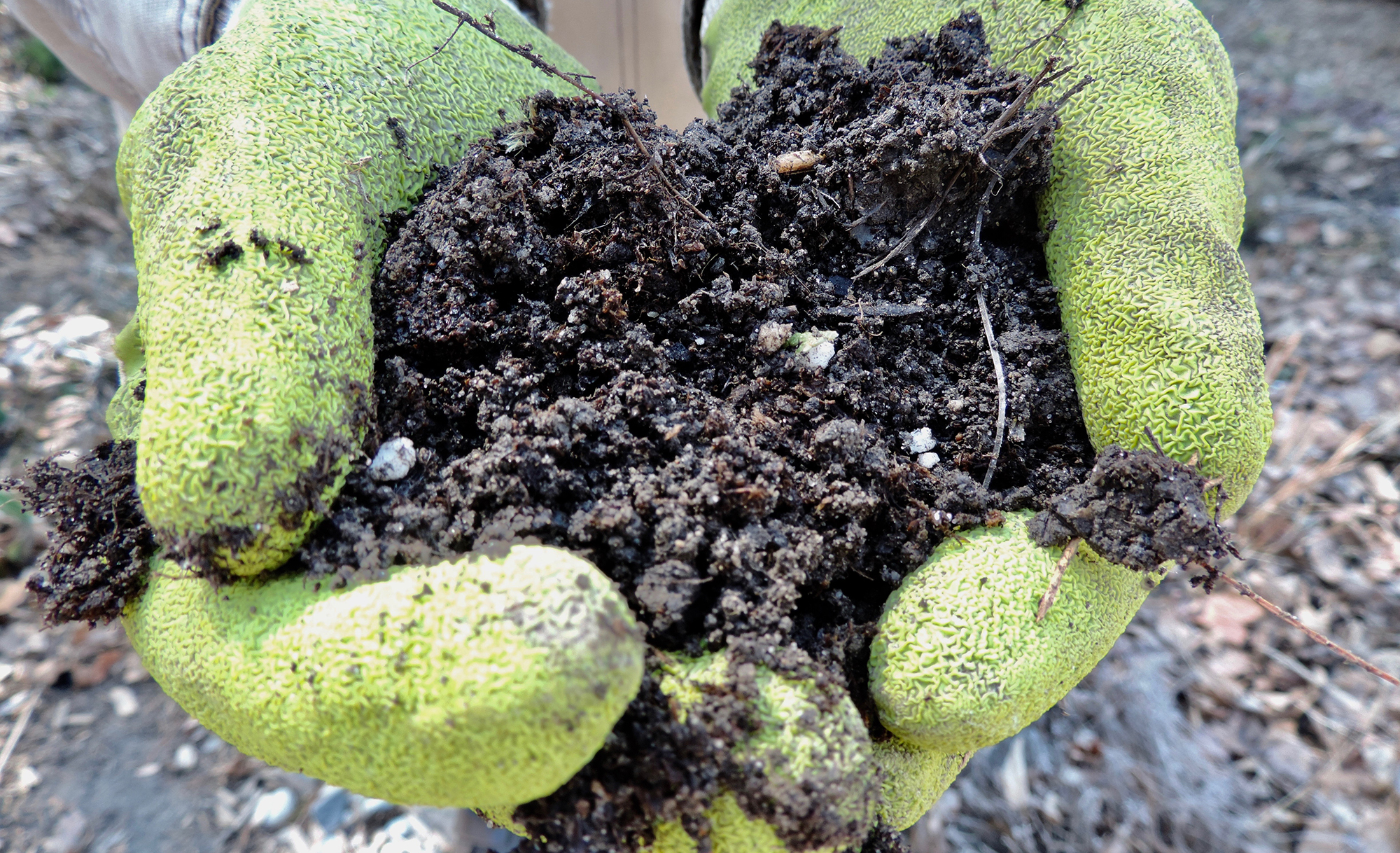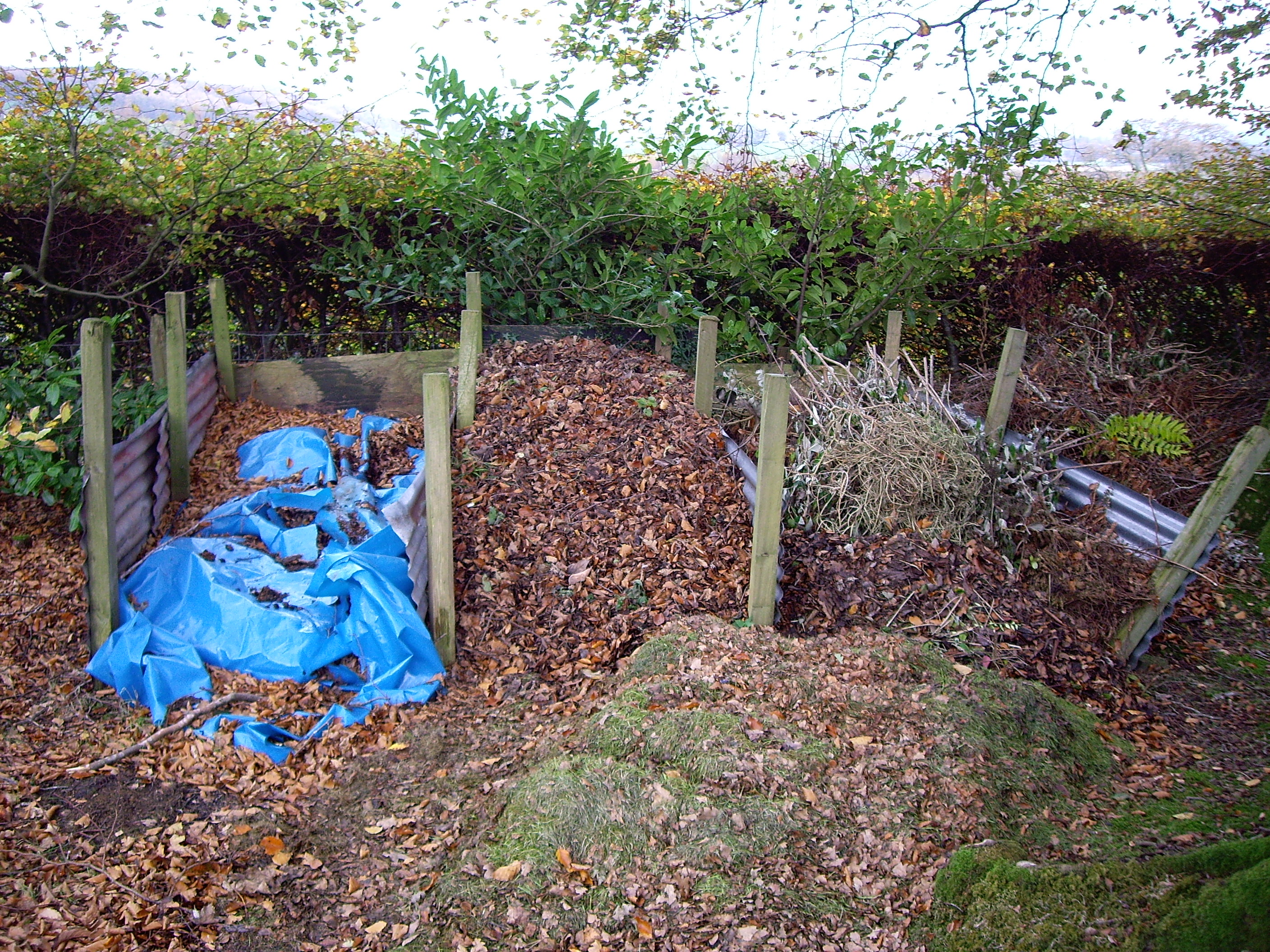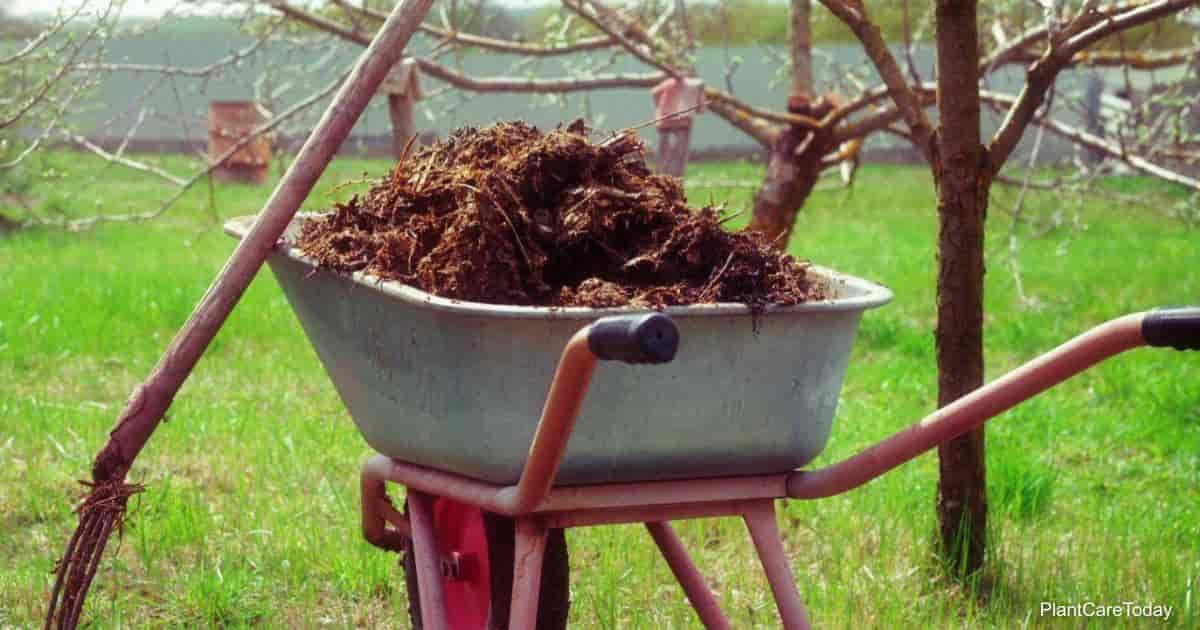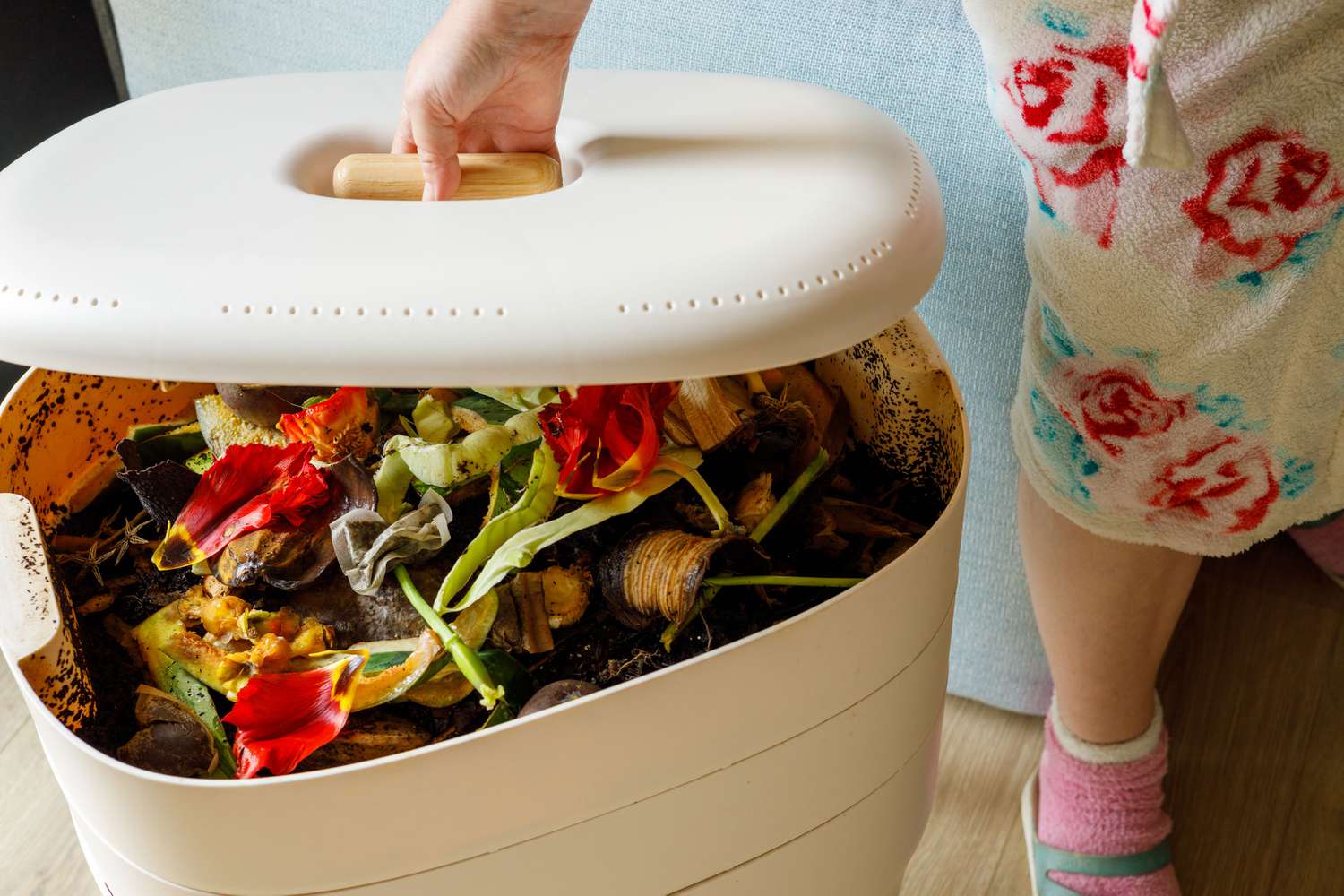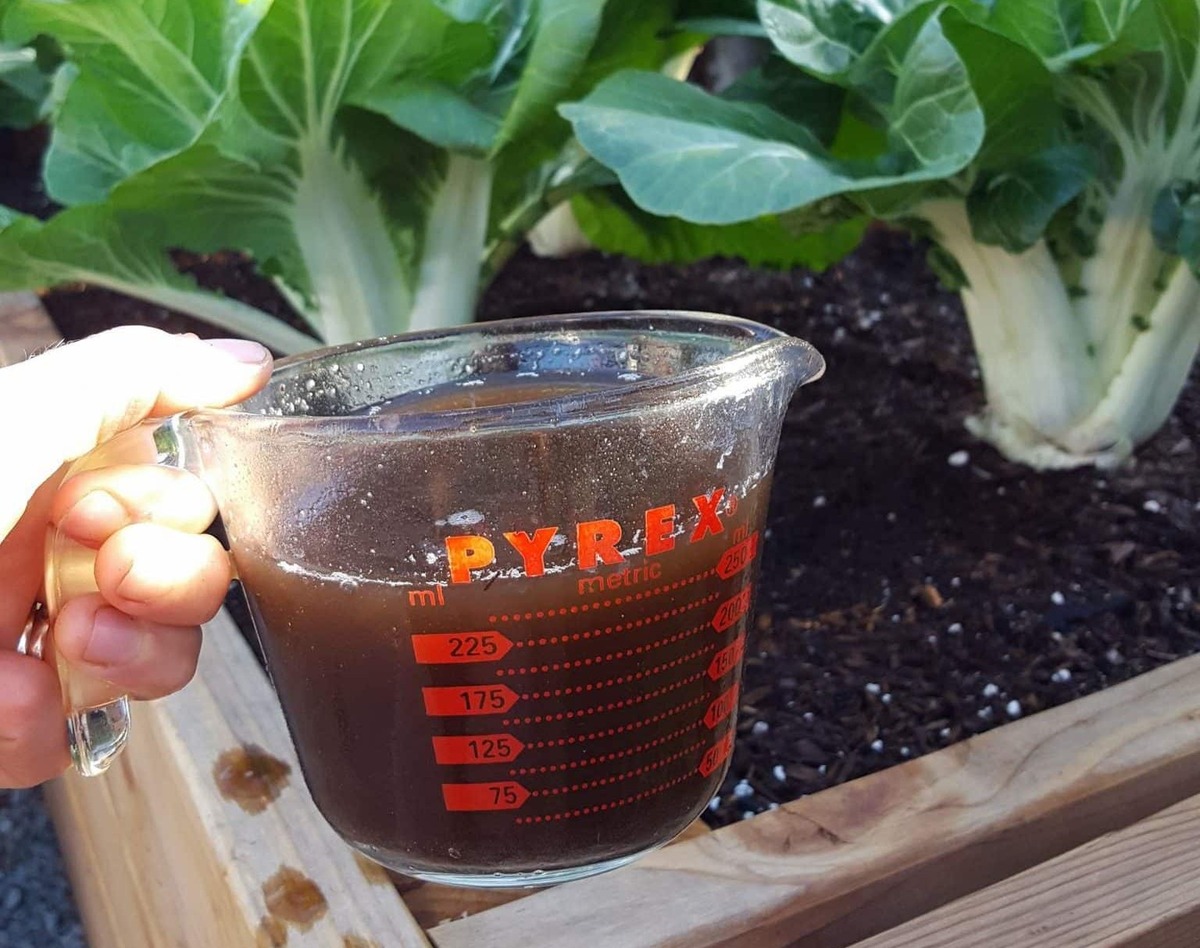Home>Gardening Techniques>DIY Projects>How To Make Compost Tea With Worm Castings
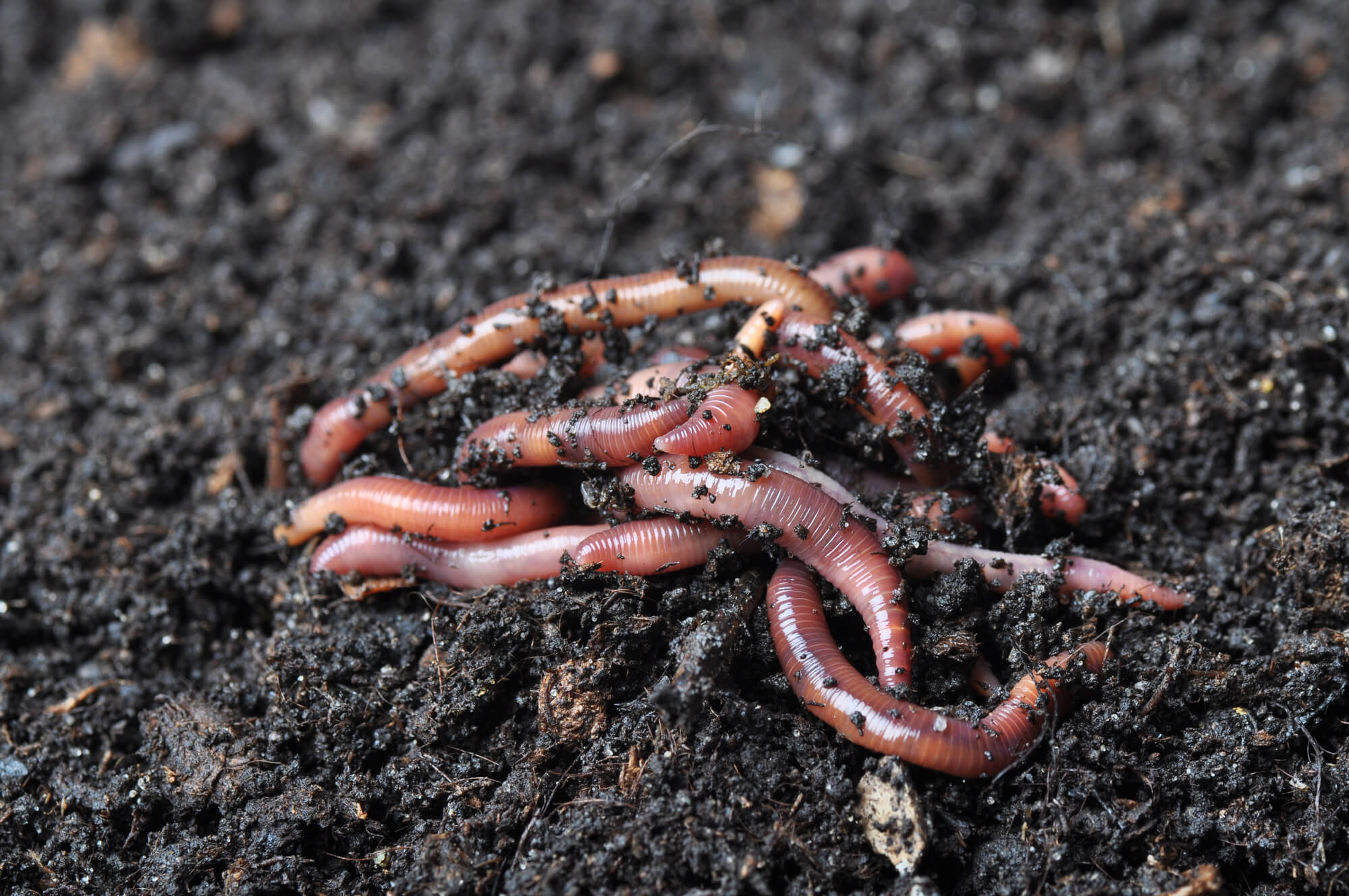

DIY Projects
How To Make Compost Tea With Worm Castings
Modified: January 22, 2024
Learn how to make compost tea with worm castings in this step-by-step DIY project guide. Create nutrient-rich organic fertilizer for your garden.
(Many of the links in this article redirect to a specific reviewed product. Your purchase of these products through affiliate links helps to generate commission for Chicagolandgardening.com, at no extra cost. Learn more)
Table of Contents
Introduction
Welcome to the world of DIY projects! Whether you’re an experienced DIY enthusiast or just starting out, you’ll find that creating and crafting your own projects can be a rewarding and fulfilling experience. Not only does it allow you to unleash your creativity, but it also helps you save money and customize items to your exact preferences.
From building furniture to home decor, from gardening to home improvement, DIY projects cover a wide range of areas. But in order to successfully complete these projects, it’s important to have a good understanding of the necessary techniques, materials, and tools.
In this article, we’ll dive deep into the world of DIY projects, focusing specifically on how to make compost tea with worm castings. Compost tea is a popular and effective organic fertilizer that improves soil health and provides essential nutrients to plants. By utilizing worm castings, also known as vermicompost, we can enhance the nutrient content and microbial activity of the compost tea, resulting in even better results for our plants.
In the following sections, we’ll explore the benefits of compost tea, the materials needed for the project, and the step-by-step process of creating and applying compost tea. We’ll also highlight common mistakes to avoid to ensure the best results for your plants. So, let’s roll up our sleeves, grab our gardening gloves, and get ready to embark on this exciting DIY journey of making compost tea with worm castings!
What is Compost Tea?
Compost tea is a liquid fertilizer made from steeping compost in water. It is a powerful, all-natural solution that provides plants with a wealth of beneficial microorganisms, nutrients, and enzymes. Compost tea is often used to improve soil health, enhance plant growth, and suppress diseases.
The process of making compost tea involves extracting the beneficial elements of compost through a brewing process. This allows for a concentrated and easily absorbable form of nutrients and microorganisms to be applied to plants, promoting their overall well-being.
Compost tea can be made using various types of compost, including traditional backyard compost, vermicompost (worm castings), or a blend of different compost materials. However, using worm castings as the base for the compost tea provides additional benefits due to their unique properties.
Worm castings, or vermicompost, are rich in microbial life, plant nutrients, and humic substances. They are produced through the digestion of organic matter by earthworms, resulting in a dark, nutrient-dense material that greatly enhances soil fertility. When used in compost tea, worm castings amplify the microbial activity, nutrient content, and overall effectiveness of the tea.
Compost tea can be applied to plants through foliar spraying, soil drenching, or as a root drench. By directly applying compost tea to plants, you are replenishing the soil with beneficial microorganisms, promoting root development, and increasing nutrient uptake. This results in healthier, more vibrant plants that are better equipped to withstand stress and ward off diseases.
Now that we understand the basics of compost tea and its benefits, let’s explore the materials you’ll need to get started on your DIY project of making compost tea with worm castings.
Benefits of Compost Tea
Compost tea offers a myriad of benefits for plants and soil, making it an essential tool in the arsenal of any avid gardener. Let’s take a closer look at some of the key advantages of using compost tea in your gardening endeavors.
- Improved Soil Structure: Compost tea helps to improve soil structure by increasing organic matter content. This allows for better moisture retention, enhanced aeration, and improved nutrient holding capacity of the soil. The result is healthier, more fertile soil that promotes optimal plant growth.
- Enhanced Nutrient Availability: The brewing process of compost tea extracts valuable nutrients such as nitrogen, phosphorus, and potassium from the compost. These nutrients are often present in a more soluble and readily available form, making them easily accessible to plants. This nutrient boost leads to improved plant growth, increased flowering, and higher yields.
- Increased Microbial Activity: Compost tea teems with beneficial microorganisms such as bacteria, fungi, and protozoa. These microorganisms play a vital role in plant health by breaking down organic matter, improving nutrient cycling, and suppressing pathogens. The application of compost tea introduces these beneficial microorganisms to the soil, enhancing the overall microbial activity and promoting a healthy soil ecosystem.
- Disease Suppression: One of the remarkable benefits of compost tea is its ability to suppress certain plant diseases. The presence of beneficial microorganisms in the tea helps to create a competitive environment against pathogens. Additionally, the tea’s application on plant foliage forms a protective barrier, reducing the risk of foliar diseases.
- Reduced Environmental Impact: Compost tea is an eco-friendly alternative to synthetic fertilizers and chemical pesticides. It is made from organic materials, reduces waste through composting, and decreases reliance on harmful chemicals in the garden. Using compost tea promotes sustainable gardening practices and minimizes the negative impact on the environment.
With such a wide range of benefits, it’s no wonder that compost tea is gaining popularity among gardeners and horticulturists. The next step is to gather the necessary materials for brewing compost tea with worm castings. Let’s explore what you’ll need for this DIY project.
Materials Needed
Before you delve into the world of making compost tea with worm castings, it’s important to gather all the necessary materials. Having everything on hand will ensure a smooth and efficient brewing process. Here’s a list of essential items you’ll need for this DIY project:
- Worm castings: The star of the show, worm castings are the key ingredient for making compost tea. You can obtain worm castings from a local worm farm or create your own worm composting bin.
- Compost tea bag or fabric: A tea bag or fabric is needed to hold the worm castings during the brewing process. This allows for easy removal of the castings once the tea is ready.
- Air pump: An air pump is essential for providing oxygen to the brewing compost tea. This promotes the growth of beneficial aerobic microorganisms while inhibiting the growth of anaerobic organisms.
- Air stone or diffuser: The air stone or diffuser is connected to the air pump and helps to disperse oxygen into the compost tea mixture. It creates a fine bubbling action that increases aeration and ensures a healthy brewing environment.
- Water: High-quality water is necessary for brewing compost tea. If your tap water contains chlorine or chloramines, it’s recommended to let it sit overnight to allow the chemicals to dissipate or use a dechlorinator.
- Bucket or brewing container: A food-grade plastic bucket, glass container, or a dedicated compost tea brewer can be used as a vessel for brewing the tea. Make sure it’s large enough to hold the desired amount of water and castings.
- Stirring utensil: You’ll need a long-handled spoon or paddle to stir the compost tea mixture during the brewing process.
- Strainer or cheesecloth: Once the tea is brewed, a strainer or cheesecloth will come in handy for removing any solid particles or castings from the liquid.
- Optional additives: Depending on your specific garden needs and plants, you may consider adding additional ingredients such as molasses (to feed microorganisms), seaweed or fish emulsion (for added nutrients), or beneficial microorganism supplements.
Now that we have all the necessary materials, let’s dive into the step-by-step process of creating and brewing compost tea with worm castings. Get ready to unleash the power of worm castings and boost the health of your plants!
Step 1: Collecting Worm Castings
The first step in making compost tea with worm castings is to gather the star ingredient – worm castings. Worm castings are nutrient-rich vermicompost that are produced through the digestion process of earthworms. Here’s how you can collect worm castings for your compost tea:
- Set up a worm composting bin: If you don’t already have a worm composting system, you can easily set one up. Purchase a worm composter or create your own using a container such as a plastic bin with drainage holes. Add bedding materials such as shredded newspaper or cardboard, and introduce a population of red worms (Eisenia fetida or Lumbricus rubellus).
- Feed the worms: To maintain a healthy population of worms and ensure the production of abundant castings, feed your worms with organic kitchen scraps such as fruit and vegetable peels, coffee grounds, and eggshells. Avoid adding dairy products, meat, or oily foods, as these can attract pests and produce unpleasant odors.
- Harvest the worm castings: Over time, the worms will digest the organic matter in the bin, turning it into nutrient-rich castings. To harvest the castings, stop feeding the worms for a few days to allow them to process any remaining material. Then, gently push the contents of the bin to one side, exposing the castings on the other side. Scoop out the castings and set them aside for brewing the compost tea.
- Store the worm castings: If you’re not immediately using the worm castings for brewing compost tea, store them in a cool, dry place. Avoid direct sunlight and excessive moisture, as these can degrade the quality of the castings. Properly stored worm castings can last for several months.
Collecting worm castings from your worm composting system not only provides you with a valuable resource for making compost tea but also helps in maintaining a healthy worm population and a productive vermicomposting system. Once you have your worm castings ready, it’s time to move on to the next step – creating a compost tea kit for brewing.
Step 2: Creating a Compost Tea Kit
Now that you have your worm castings collected, it’s time to create a compost tea kit. Having a designated kit will make the process of brewing compost tea with worm castings organized and convenient. Here’s how you can create your own compost tea kit:
- Select a tea bag or fabric: Choose a tea bag or fabric that is large enough to hold the desired amount of worm castings. You can find compost tea bags specifically designed for this purpose, or you can repurpose a fine mesh bag or cheesecloth. The tea bag will hold the castings during the brewing process and allow for easy removal later on.
- Fill the tea bag with worm castings: Take your tea bag or fabric and carefully fill it with the worm castings you collected in the previous step. Leave a bit of room in the bag to allow the castings to expand slightly during the brewing process. Once filled, secure the bag tightly with a knot or twist tie to keep the castings contained.
- Label and store the compost tea bag: It’s a good idea to label the compost tea bag with the date and contents for future reference. Then, store the bag in a cool, dry place, away from direct sunlight. This ensures that the worm castings remain fresh and ready for brewing when you’re ready to make your compost tea.
- Prepare your equipment: Along with the tea bag, make sure you have all the necessary equipment ready for the brewing process. This includes a suitable brewing container or bucket, an air pump, an air stone or diffuser, and a stirring utensil. Clean and sanitize your equipment before use to prevent any contamination.
- Optional: Add additional ingredients: Depending on your specific gardening needs, you may consider adding optional ingredients to your compost tea kit. This can include organic additives such as molasses to feed the microorganisms, seaweed or fish emulsion for added nutrients, or beneficial microorganism supplements to boost microbial activity.
Creating a compost tea kit allows you to have a ready-to-use package of worm castings specifically for brewing compost tea. Having all the necessary materials organized and easily accessible will streamline the process and make it more convenient for you. Now that your kit is ready, it’s time to move on to the next step – brewing the compost tea!
Step 3: Brewing Compost Tea
Now that you have your compost tea kit prepared, it’s time to start brewing the compost tea. This step-by-step process will guide you through the brewing process to ensure a successful batch of nutrient-rich compost tea:
- Fill your brewing container: Begin by filling your brewing container with water. Use high-quality water, such as filtered water or tap water that has been left out overnight to allow any chlorine or chloramines to dissipate. The amount of water will depend on the desired concentration of compost tea, but a general rule of thumb is to fill the container about three-quarters full.
- Attach the air pump and air stone: Connect the air pump to the power source and attach the air stone or diffuser to the airline tubing. Place the air stone in the brewing container, ensuring that it is submerged and evenly distributed. The air stone will create a fine bubbling action, providing oxygen for the beneficial microorganisms.
- Add the compost tea bag: Take the compost tea bag containing the worm castings and place it in the water. Make sure the bag is fully submerged to allow the beneficial microorganisms in the worm castings to extract into the water. You can secure the bag to the side of the container using a clip or string to keep it in place.
- Set the brewing time: The brewing time for compost tea can range from 24 to 48 hours, depending on your preferences and the desired strength of the tea. However, be cautious not to brew the tea for too long, as it can lead to anaerobic conditions and foul odors. Set a timer to ensure you don’t overbrew the tea.
- Stir the mixture occasionally: During the brewing process, give the compost tea mixture a gentle stir every few hours. This helps to circulate the water and ensures the worm castings are fully steeped and infused into the tea. Be careful not to splash or agitate the mixture vigorously, as this can disturb the oxygen levels.
- Monitor the water temperature: It’s important to keep an eye on the water temperature during the brewing process. The ideal temperature range for compost tea is typically between 65°F and 85°F (18°C and 29°C). If the water becomes too hot, it can harm the beneficial microorganisms. If it becomes too cold, the brewing process may slow down.
Remember, the brewing process for compost tea allows the beneficial microorganisms from the worm castings to multiply and thrive in the oxygenated environment. These microorganisms will beneficially impact the soil and plants when applied. Once the brewing time is complete, it’s time to move on to the next step – applying the compost tea to your plants.
Step 4: Applying Compost Tea
After brewing your compost tea with worm castings, it’s time to apply it to your plants. The application process helps introduce the beneficial microorganisms and nutrients from the tea into the soil, promoting plant health and vitality. Here’s how you can effectively apply compost tea:
- Strain the compost tea: Before applying the tea, strain it through a fine mesh strainer or cheesecloth to remove any solid particles or castings. This will ensure a smooth application and prevent clogging of your sprayer or watering can.
- Choose the method of application: Compost tea can be applied through foliar spraying, soil drenching, or as a root drench. The method you choose will depend on the type of plants and their specific needs. Foliar spraying involves spraying the tea directly onto the leaves, while soil drenching entails pouring the tea around the base of the plants. Root drenching involves applying the tea directly to the root zone of the plants.
- Apply the compost tea: When applying compost tea, it’s best to do so in the early morning or late afternoon to avoid direct sunlight and high temperatures. This allows the tea to be absorbed by the plants before the heat of the day. Use a sprayer or watering can to apply the tea evenly, making sure to cover both the leaves and the soil around the plants.
- Repeat the application: For optimal results, it’s recommended to regularly apply compost tea throughout the growing season. This will help maintain a healthy soil ecosystem and provide ongoing nourishment to your plants. The frequency of application will depend on the specific needs of your plants, but a general guideline is to apply every two to three weeks.
- Monitor plant response: After applying compost tea, observe how your plants respond. Look for signs of improved growth, increased vigor, and disease resistance. Over time, you should notice healthier and more vibrant plants, with stronger root systems and enhanced flower and fruit production.
- Adjust application as needed: As you gain experience with compost tea application, you may need to make adjustments based on the specific requirements of your garden. Pay attention to plant feedback and make changes to the concentration or frequency of application as needed.
Applying compost tea is an effective way to provide your plants with a nutrient boost and beneficial microorganisms. It supplements the soil with organic matter, enhances nutrient availability, and improves overall plant health. With these steps in mind, you can confidently apply your homemade compost tea and enjoy the increased vitality of your plants.
Common Mistakes to Avoid
While making compost tea with worm castings can be a rewarding DIY project, there are some common mistakes that you should be aware of and avoid. These mistakes can impact the quality and effectiveness of your compost tea. Here are some key pitfalls to watch out for:
- Overbrewing: Allowing the compost tea to brew for too long can lead to the growth of anaerobic microorganisms, resulting in a foul smell and ineffective tea. Stick to the recommended brewing time to maintain a healthy microbial balance.
- Using unclean equipment: It is crucial to start with clean and sanitized brewing equipment. Dirty or contaminated equipment can introduce unwanted pathogens or disrupt the beneficial microbial activity in compost tea.
- Excessive agitation: Vigorous stirring or shaking of the compost tea mixture can decrease oxygen levels and disrupt the growth of beneficial aerobic microorganisms. Gentle stirring is sufficient to distribute oxygen and nutrients throughout the tea.
- Applying tea at inappropriate times: Avoid applying compost tea when the weather is extremely hot or during the peak sunlight hours of the day. High temperatures can stress plants, and direct sunlight may cause the tea to evaporate quickly and reduce its effectiveness.
- Using poor quality water: The quality of the water used to brew compost tea can greatly impact its efficacy. Avoid using water that is high in chlorine or chloramines, as they can harm the beneficial microorganisms. If necessary, let tap water sit overnight or use a dechlorinator to remove these chemicals.
- Ignoring plant-specific requirements: Different plants have varying nutritional needs. It is important to consider the specific requirements of your plants and adjust the concentration and frequency of compost tea application accordingly. Be attentive to any plant feedback and make necessary adjustments.
- Not straining the tea: Failing to strain the compost tea before application can result in clogged sprayers or uneven distribution of the tea. Straining the tea through a fine mesh strainer or cheesecloth will ensure that it is free from any solid particles or castings.
By avoiding these common mistakes, you can ensure that you get the most out of your compost tea. Remember to follow the brewing and application steps carefully, and be mindful of the specific needs of your plants. With proper attention and care, your compost tea will be a powerful and effective organic fertilizer for nourishing your garden.
Conclusion
Congratulations! You have successfully learned how to make compost tea with worm castings, a DIY project that can greatly benefit your garden. Compost tea, rich in beneficial microorganisms and nutrients, promotes soil health, enhances plant growth, and reduces the need for synthetic fertilizers.
Throughout this guide, we explored the process of creating compost tea, starting from collecting worm castings to applying the tea to your plants. Remember to collect worm castings from your vermicomposting system, create a compost tea kit for convenience, brew the tea with proper aeration and water quality, and apply it to your plants using the suitable method.
As you embark on this journey, keep in mind the common mistakes to avoid, such as overbrewing, using unclean equipment, and ignoring plant-specific requirements. By following the steps and avoiding these mistakes, you’ll maximize the benefits of compost tea and ensure healthier, thriving plants in your garden.
Remember, DIY projects like making compost tea are not only a cost-effective way to nurture your plants but also an opportunity to connect with nature and develop your gardening skills. Engaging in DIY projects can be a fulfilling and enjoyable experience, allowing you to unleash your creativity and customize your gardening practices.
So go ahead, gather your materials, get your hands dirty, and unleash the power of compost tea with worm castings in your garden. Enjoy the process of nurturing your plants and witnessing the remarkable results that come from using this organic, nutrient-dense fertilizer.
Happy gardening and happy brewing!
